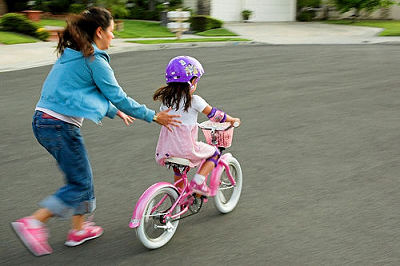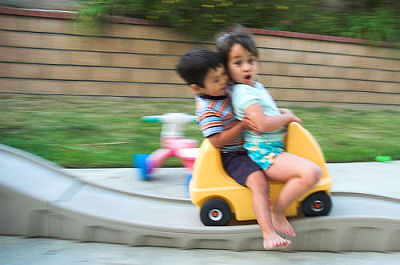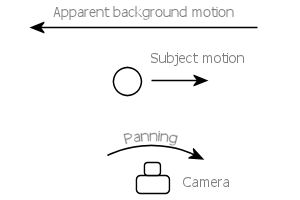Photographs have always fascinated people with their ability to capture a fleeting moment, to freeze it and preserve it, in a very tangible way, forever. It’s an extremely powerful form of expression. But, through the use of creative exposures, a photograph can do much more than document the world and people around us. Photographs can record emotions, feelings, movement and pass those on to anyone who views them. One way of doing this is through the use of a technique called “panning.”
Panning is a technique that seems to break a lot of rules. You’d think, from reading camera owner’s manuals, that photographs are always supposed to be brightly lit and perfectly focused and that you should always shoot them by keeping your camera as still as possible. And while it’s true that that technique is useful and desirable in many circumstances, there are a lot of reasons not to shoot that way. Panning is one of them.

Letting go. 1/40s @ f/20
Panning is attempting to track a moving subject by moving your camera so that the subject stays in the same spot in the frame during the entire exposure. You’ll typically use this technique with fast-moving subjects (relative to the background) to get the sharpest photo possible. Combining this with a slower than normal shutter speed yields a photograph with a moving subject in focus in front of a motion-blurred background. When done well, the sense of speed can be quite powerful.

Warning: bridge is out. 1/40s @ f/3.5
The key to doing these types of shots is the apparent motion of the subject relative to the background. If the subject is very far away then it will appear to be moving slowly even if it is actually moving very fast. You will be able to move your camera very slowly to track it. This is not what you want. You can increase the apparent motion of the subject by moving closer or by zooming in. The larger the subject is in your frame, the faster you will have to pan to keep up with it, and the more motion blurred the background will be. Shutter speeds starting around 1/60s or slower are usually pretty good. But you can motion blur the background at speeds of 1/500s if the camera is panning fast enough.
How to make a panning shot with a motion-blurred background:

Panning diagram, top view
- Choose a spot perpendicular to the action, so that the object you want to shoot will be moving across the frame (from one side to the other).
- Put your camera in shutter priority mode and set the shutter speed for about 1/60s or 1/30s. Remember, this setting depends on subject speed, distance, and lens focal length. You may have to experiment to find the perfect setting for your particular scene. Try panning a couple of test shots without the subject to fine tune your setting.
- Begin tracking your subject as it approaches. Remember that as it gets closer, it will seem to speed up and reach a peak speed when it is right in front of you.
- Press the shutter just before your subject passes you. Continue panning with the subject through the entire exposure! Do not stop panning. Keep the subject in the same spot within the frame.
- Continue panning after the exposure is complete. Following through can improve the steadiness of your shot.
- For cameras with a little shutter lag you may want to start your exposure a little sooner.
- It can also help to lock your focus on a point you know the subject is going to pass through. Lock the focus (usually by half-depressing the shutter button) and time your shot so that the shutter is open as the subject passes through that point. This way you can avoid focusing problems.
- If you’re not sure where the subject is going to be when it passes you and you’re having trouble focusing, review the article about depth of field to learn to how preset your focus for maximum depth of field.
Panning is a technique that is pretty simple to do (it’s easier to do than it sounds) and can make some wonderful photographs. The sense of motion can really accentuate an otherwise static photo. Be prepared to take a lot of shots but the results are worth it.









0 comments